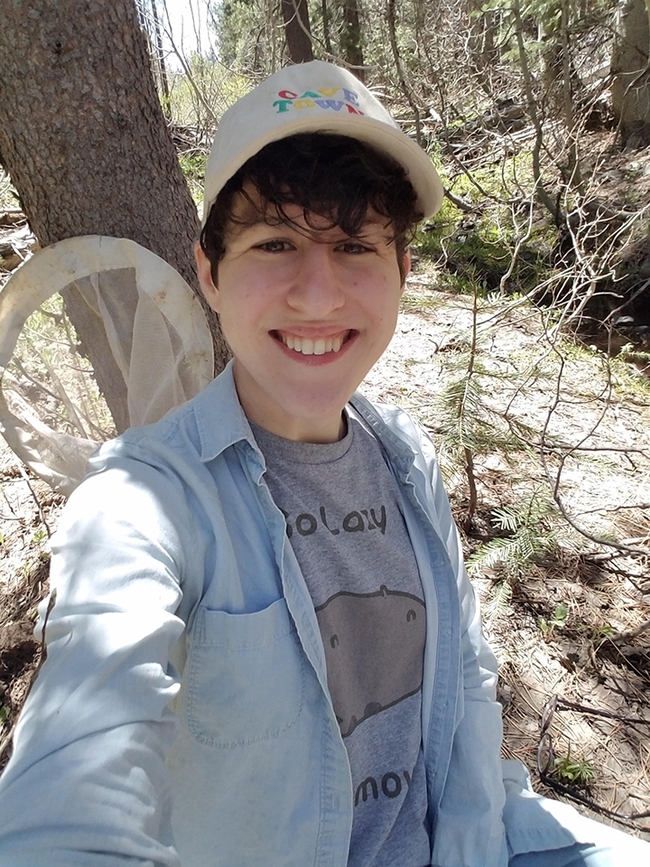
The UC Davis Department of Entomology and Nematology, showcased forest, medical and agricultural entomology.
Visitors, from senior citizens to toddlers, crowded into Room 122 to see forest beetles, maggots, lady beetles (aka ladybugs), pipevine swallowtail caterpillars and more. They checked out the butterfly specimen displays, ant posters, entomological gear, and a huge sculpture of a praying mantis that appeared ready to pounce.
Doctoral candidate Danielle Rutkowski of the Graduate Student Entomology Association and forensic entomologist Robert "Bob" Kimsey of the faculty organized the event.
"The crowds were incredible!" Rutkowski said. "I think I read that there were about 70,000 attendees, and we had such a great turnout at all our exhibits. Roach Races was as popular as ever, and Maggot Art drew some pretty big crowds as well! The Roach Races took place at the entrance to Briggs (photos coming), while the Maggot Art (see April 25 Bug Squad blog), drew crowds in the Green Hall courtyard.
"We showed off pests that can be problematic, both in agricultural fields and in home gardens," said Cooperative Extension specialist and agricultural entomologist Ian Grettenberger of the Department of Entomology and Nematology. "We were highlighting how pests can damage the food we'd like to eat and growers need to grow. At the same time, we also wanted to highlight biological control and the natural enemies out there that can help manage pests."
Entomology enthusiasts took scores of images, particularly of the pipevine swallowtail caterpillars being displayed by graduate student Grace Horne of the laboratory of Emily Meineke, assistant professor of urban landscape entomology. T Caterpillar Biology promises to return next year.
Three-year-old Connor Lemcke of Davis watched in fascination. "He loves bugs," said his mother Coreen Lemke, a 2009 UC Davis alumna who majored in art communication and education.
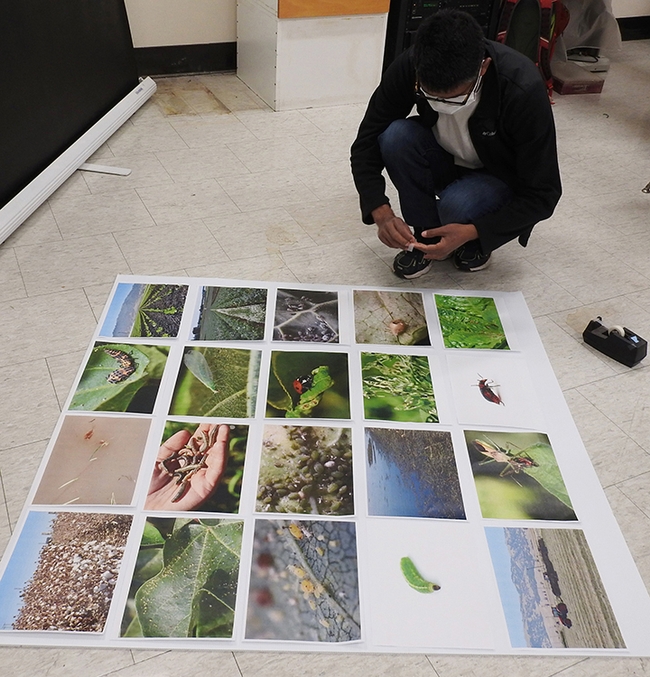
Some excerpts from the historical document, posted on the website:
"The very first record of entomology being taught at Davis occurred when Professor C. W. Woodworth (from UC Berkeley) spoke to the State Farmers' Institute on Oct. 30, 1907 at Davisville on the "Whitefly Situation in California." This was a forerunner to the Farmers' Short Courses (three to six week courses) which began in the fall of 1908. Professor Woodworth was in charge of the lectures in entomology and assisted by Earl L. Morris, W. H. Volck, and J. S. Hunger—all these individuals commuted to Davis. General lectures on Introductory Entomology, Horticultural Pests, and Pest Control, were given regularly between 1908-1912. In 1912 and 1914 H. J. Quayle also contributed special lectures on crop pests and their control."

Revered Tradition. Everything comes together during the annual UC Davis Picnic Day, billed as "one of UC Davis' most revered traditions and serves as the university's annual Open House for prospective and current students, families, alumni, staff, faculty, and the greater Davis and regional communities," according to the website.
This year officials selected the theme, Rediscovering Tomorrow, "because right now, everyone has the opportunity to rediscover what their future holds," the website points out. "Our campus continues to embrace this opportunity while bringing our UC Davis community back in person. With the first in-person Picnic Day in nearly three years, every attendee can experience Picnic Day with fresh eyes and rediscover their tomorrow at the event."
They did indeed. Those in Room 122 of Briggs Hall discovered--or rediscovered--insects involved in forest, medical and agricultural entomology.
Attached Images:
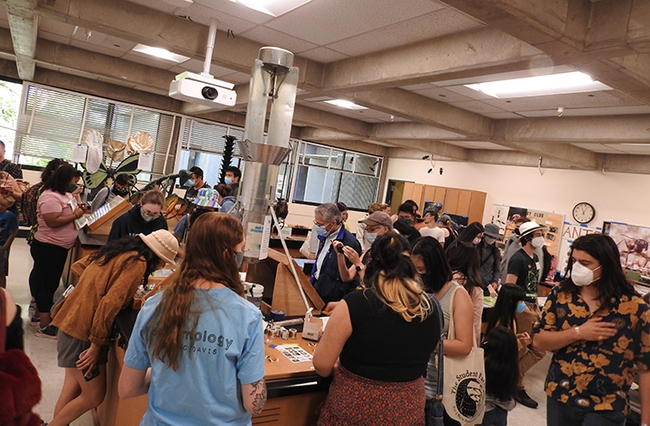
The crowd flows into 122 Briggs Hall in the early morning of April 23, UC Davis Picnic Day. (Photo by Kathy Keatley Garvey)
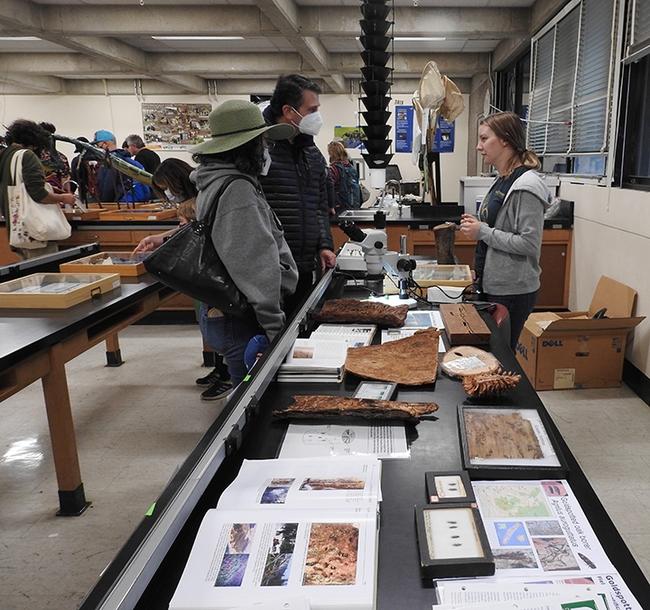
Doctoral student and forest entomologist Crystal Homicz answers questions. (Photo by Kathy Keatley Garvey)
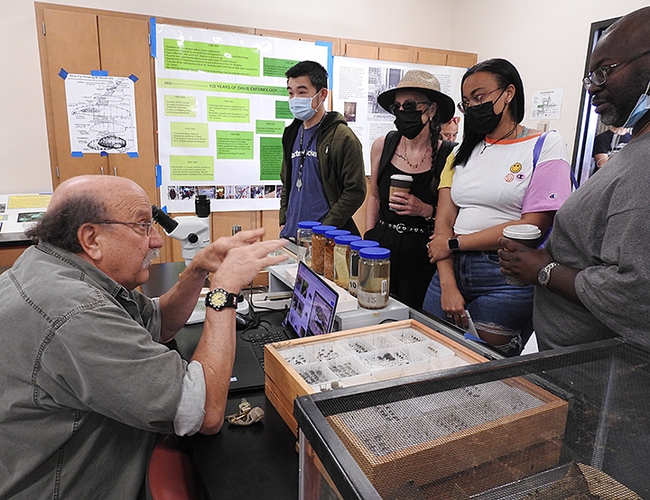
Forensic entomologist Robert "Dr. Bob" Kimsey talks about the importance of forensic entomology. He is the faculty coordinator of the UC Davis Department of Entomology and Nematology's Picnic Day activities. (Photo by Kathy Keatley Garvey)

The jars in front of forensic entomologist Robert Kimsey contain maggot specimens. (Photo by Kathy Keatley Garvey)
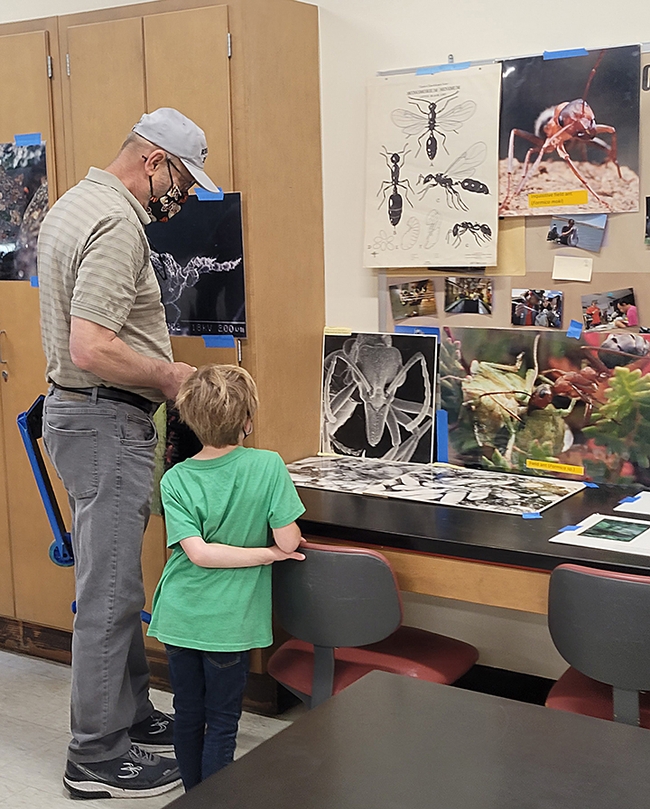
Ant posters from the Phil Ward lab drew the attention of these visitors. (Photo by Danielle Rutkowski)
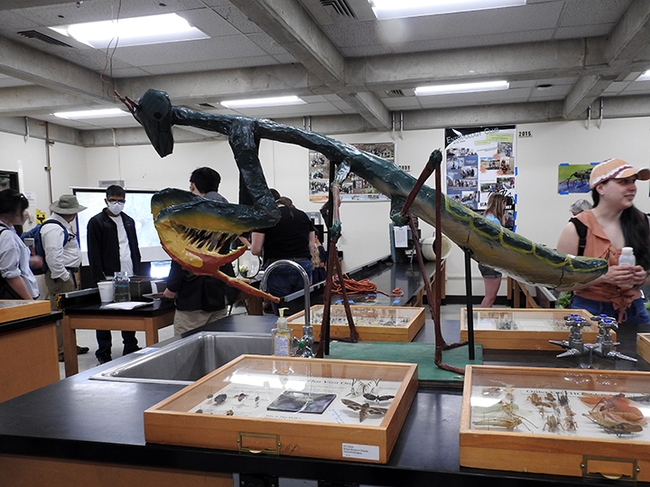
A huge sculpture of a praying mantis occupied part of 122 Briggs Hall. (Photo by Kathy Keatley Garvey)
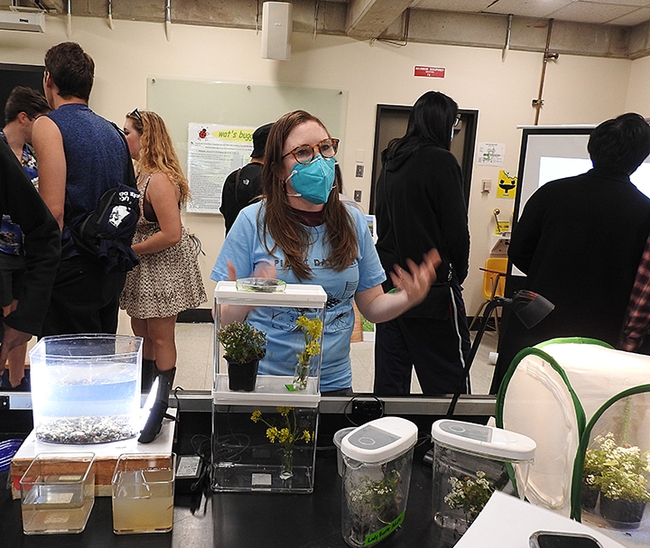
Doctoral student Addie Abrams of the agricultural entomology laboratory of Ian Grettenberger fields questions from the crowd. (Photo by Kathy Keatley Garvey)
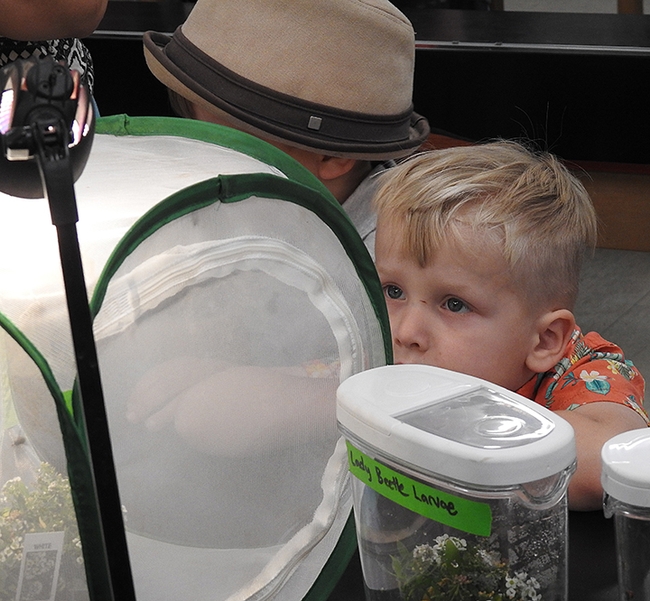
All the insects fascinated Connor Lemcke, 3, of Davis. "He loves bugs," said his mother, Coreen Lemke, a UC Davis alumna. (Photo by Kathy Keatley Garvey)
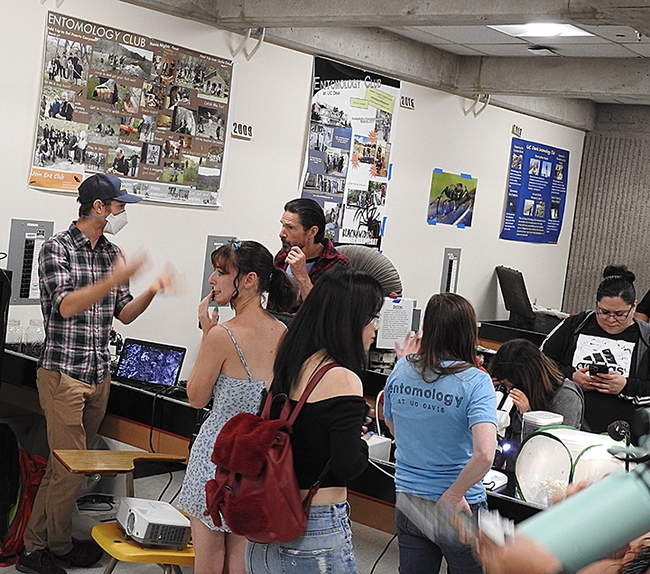
Cooperative Extension specialist and agricultural entomologist Ian Grettenberg (far left) responds to questions. (Photo by Kathy Keatley Garvey)